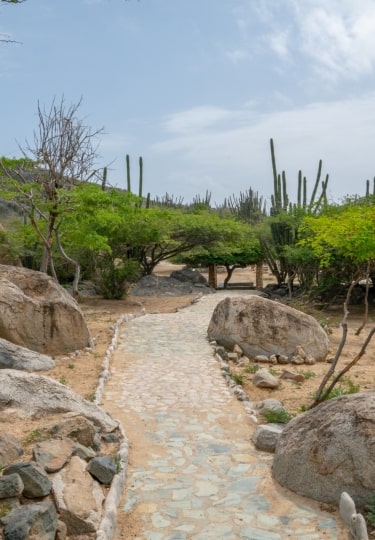Shimmering in the southern Caribbean Sea, Aruba’s crystal-clear waters and white sand beaches are arguably the island’s main draw. Yet many of the best places in Aruba are also found beyond the beaches.
Kaleidoscopic cities undergoing creative revivals, long-abandoned gold mines, and the desert-like Arikok National Park are just some of the country’s diverse attractions. Then, of course, you have that scenic shoreline, where dazzling crushed-coral beaches, mangrove-shrouded swimming sites, and world-class wreck diving await.
Whether you prefer to spend your sun-kissed day swimming and snorkeling or seeking out culture and creativity, these are the best places in Aruba to visit.
Arashi Beach
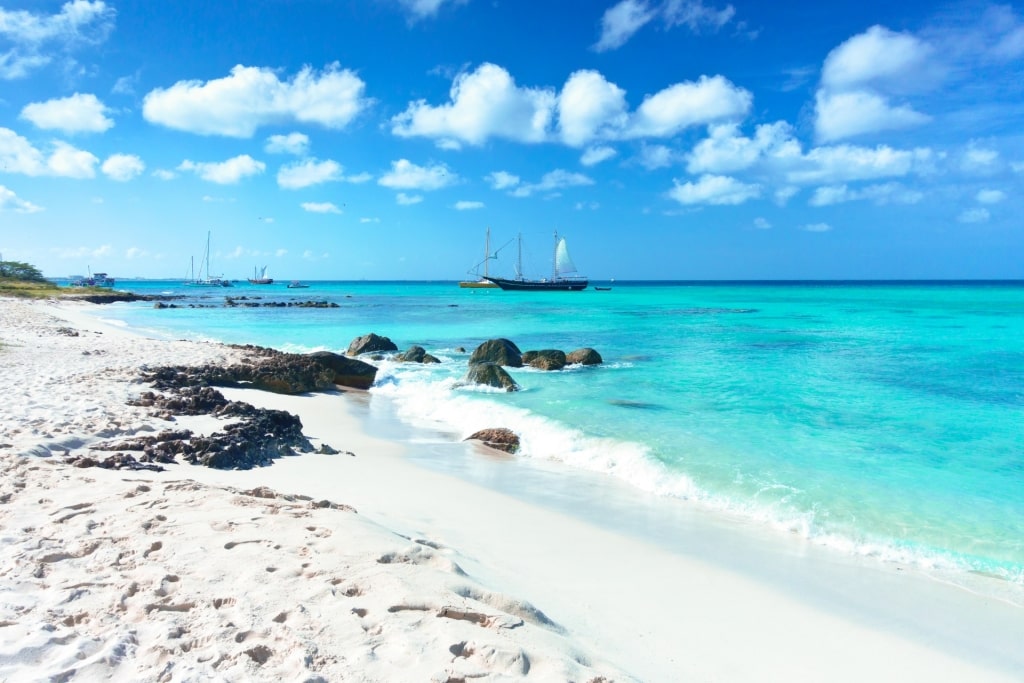
Arashi Beach
One of Aruba’s greatest pleasures is sinking into powdery white sands and letting the lapping waves lull you into a daze—though it’s no easy task deciding which of the best beaches in Aruba to lounge on.
Arashi Beach, on the island’s northwestern tip, is undoubtedly one of the top picks, especially if you’re seeking a secluded sojourn with a side of snorkeling.
Along this magnetic stretch of shore, the tranquil turquoise waters are awash with marine life, and Arashi’s reef is consistently one of the best places in Aruba to spot turtles.
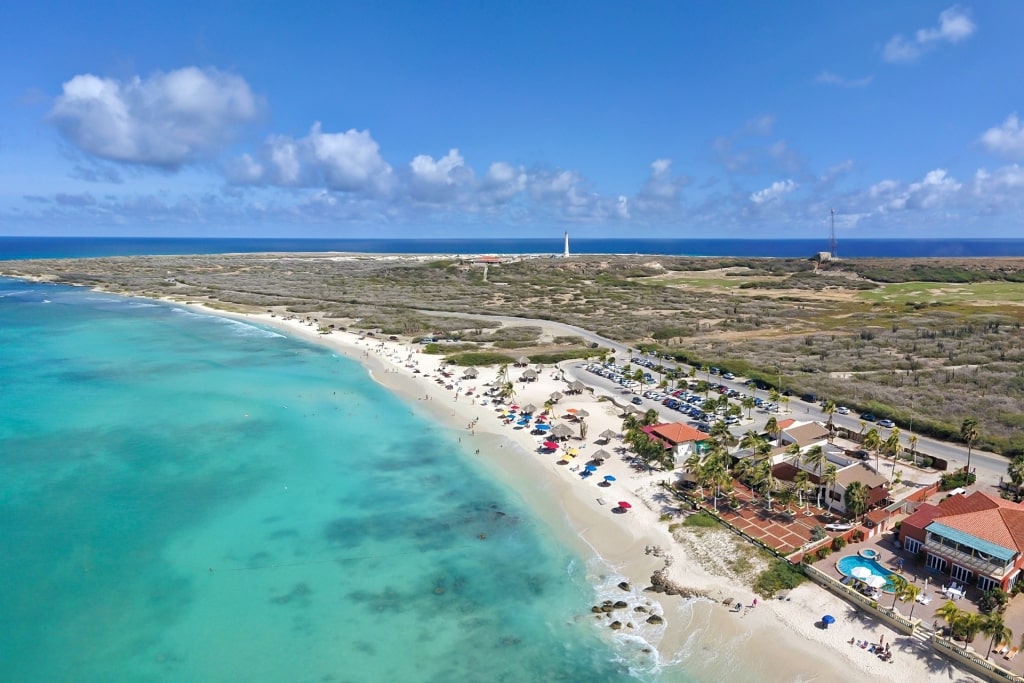
Arashi Beach
A firm favorite with locals, you can rely on the beach bar to provide all the quality snacks and refreshments you’ll need for a perfect day on the coast. Kayaks and parasols are available for rent, while sporadic palm trees provide a little natural shade.
If the swell is calling, then this underdeveloped coastline is a fantastic place to enjoy some surf. Beyond, the sublime landscape of the Arashi Dunes is ideal for a laid-back post-swim stroll.
Read: Aruba vs. Curaçao: Which Should You Visit?
Arikok National Park
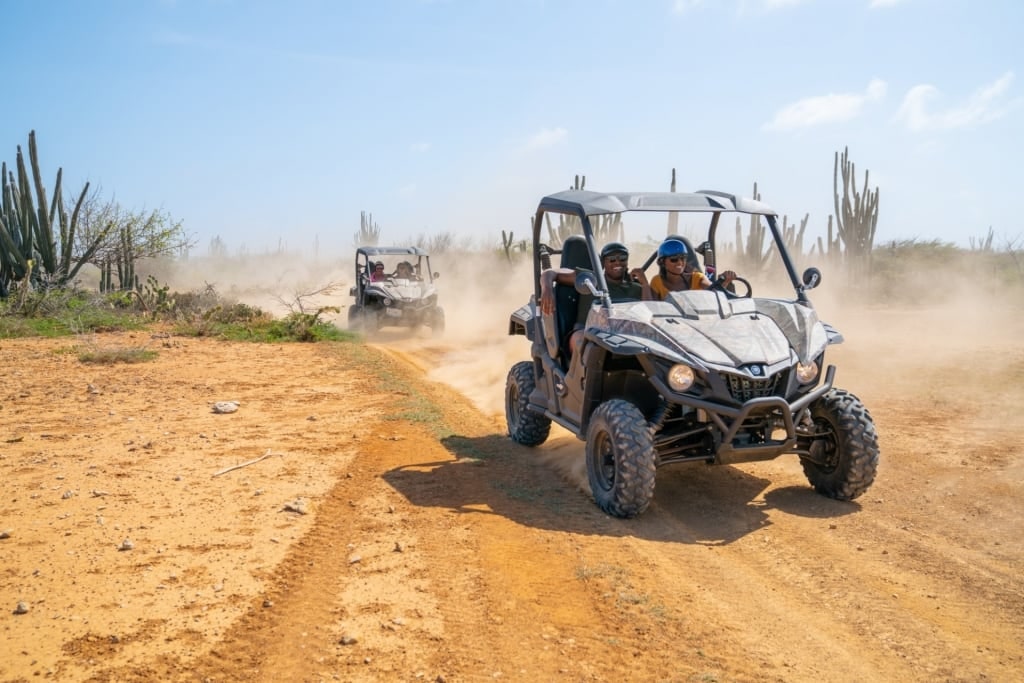
Arikok National Park
Of all the places to visit in Aruba, the wild and rugged Arikok National Park often surprises visitors the most. Encompassing around 20 percent of the island, this primarily arid and cacti-coated terrain is a true adventure playground.
Best explored by buggy or four-wheel drive, the island’s first and only national park, protected since 2000, is a trove of native flora and fauna. As you bounce across the near-untamed landscape, keep an eye out for lizards darting between the scrub, or parakeets above.
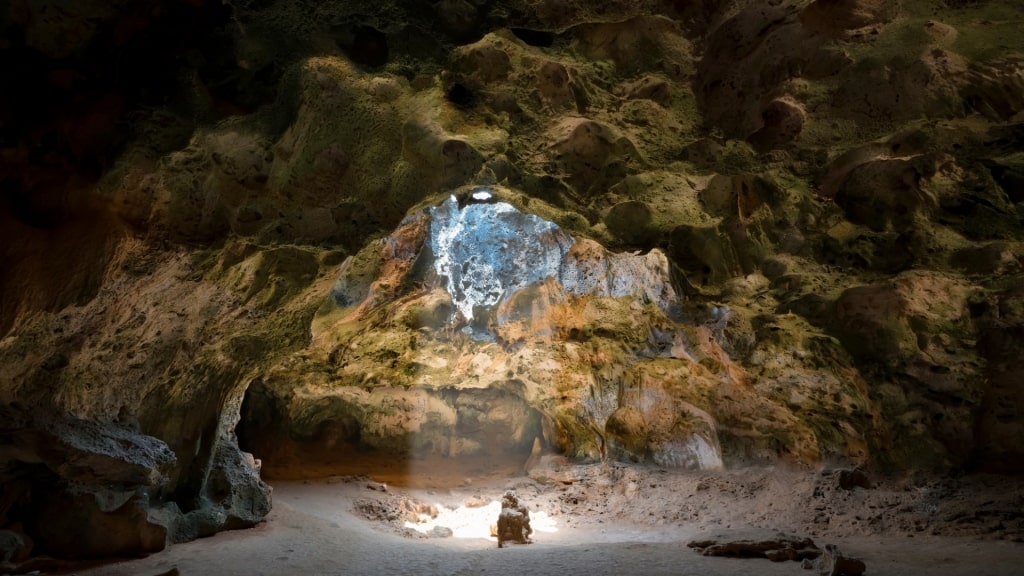
Quadirikiri Cave, Arikok National Park
Cultural heritage is also well preserved in the park’s cave system, where the chambers’ naturally-caved skylights illuminate ancient drawings.
Fontein and Quadirikiri are two of the largest and most fascinating caverns, and local rangers will help to spot the rock drawings, which were etched by Arawak Indians around 2,500 to 3,500 years ago.
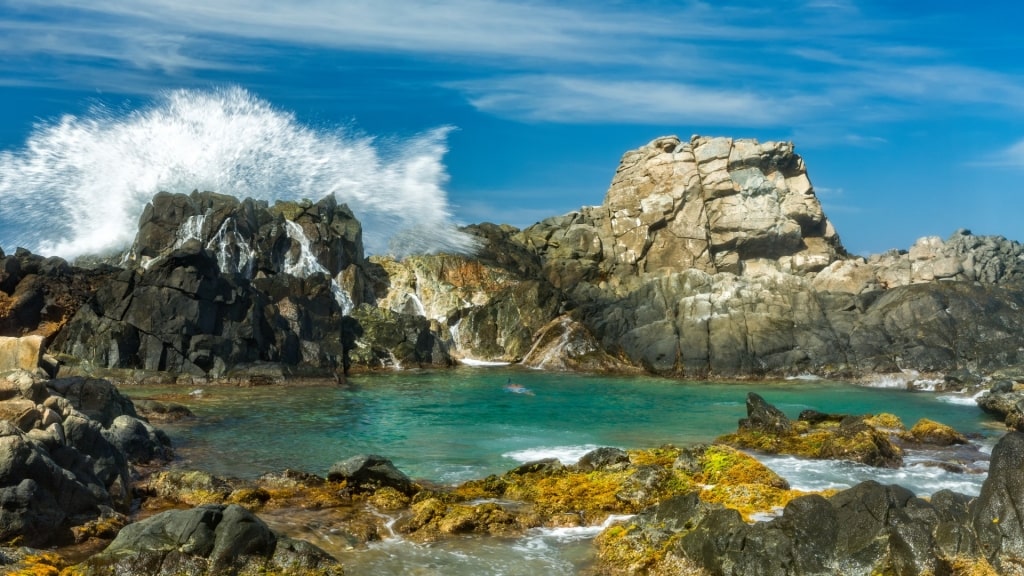
Conchi Natural Pool, Arikok National Park
The park’s coast is equally as enchanting—albeit wilder than the west—offering many dramatic locations for a cooling dip. Of these, the Conchi Natural Pool is considered one of the best places in Aruba’s Arikok National Park to enjoy a swim.
As you relax in the calmer waters of the protected “bowl”, a dramatic backdrop of piercing rocks and crashing waves will mesmerize you. Visiting this unforgettable bathing spot is one of the best things to do in Aruba, and a great end to a tour of the park.
Oranjestad
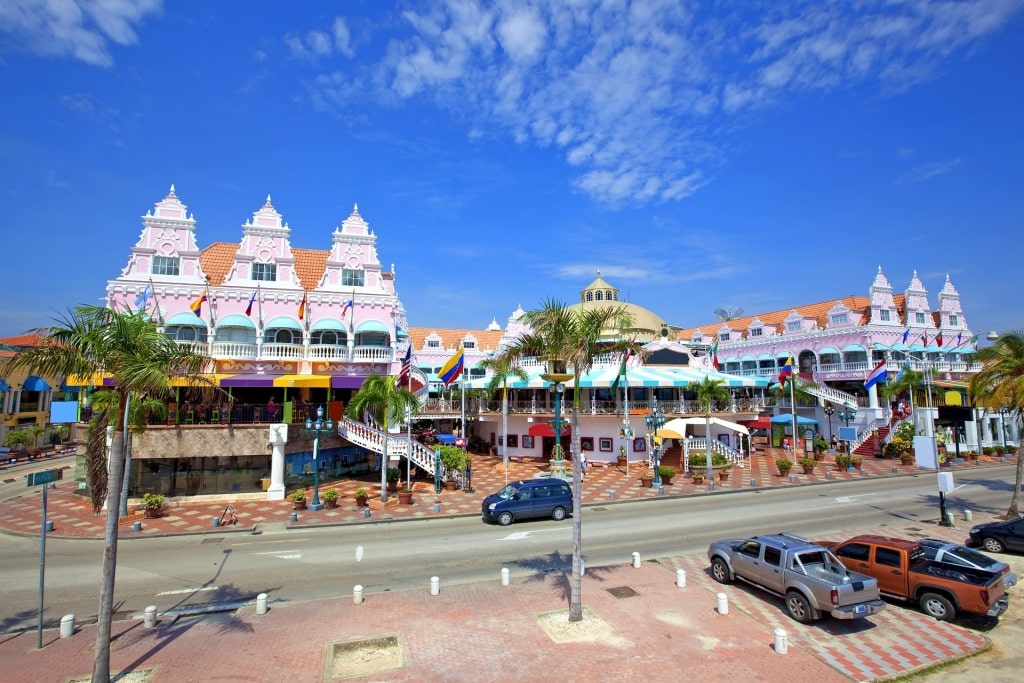
Oranjestad
Slightly whimsical in its appearance, Oranjestad, the island’s colorful capital, is packed with photogenic corners. From the pastel-hued Dutch Colonial facades of Plaza Daniel Leo to the vibrant two-tier trams and famously pink Royal Plaza, the city pops at every turn.
Oranjestad is also one of the best places in Aruba for first-time visitors to start unearthing the island’s heritage and culture. The National Archaeological Museum of Aruba and Fort Zoutman, a military fortification turned history museum, are worth visiting to learn more about the country’s history.
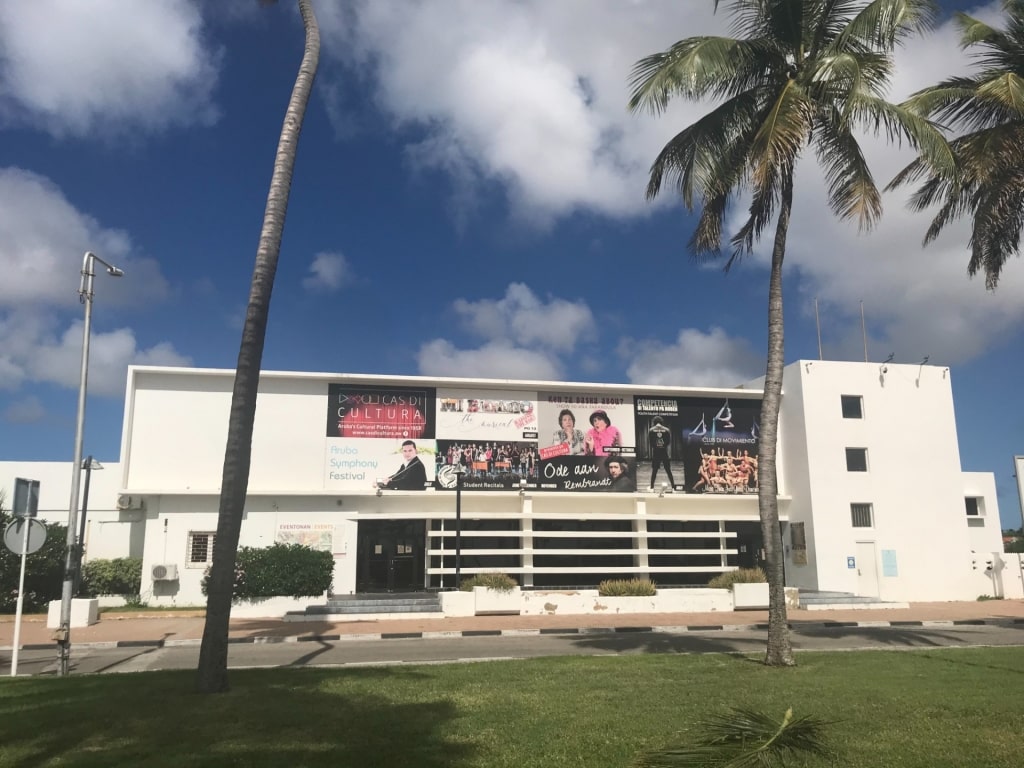
Cas di Cultura, Oranjestad Photo by Caribiana on Wikimedia Commons, licensed under CC BY-SA 4.0
For more modern cultural initiatives, Cas di Cultura shouldn’t be missed. This thriving, multi-purpose events space has helped Aruba reinvent itself as a Caribbean cultural kingpin, with local artisan products for sale and a rich calendar of exhibitions and performances.
With lively malls, flea markets, and an abundance of first-class restaurants serving South American, Dutch, and Aruban cuisine, the island’s capital perfectly encapsulates Aruba’s diverse soul.
Eagle Beach
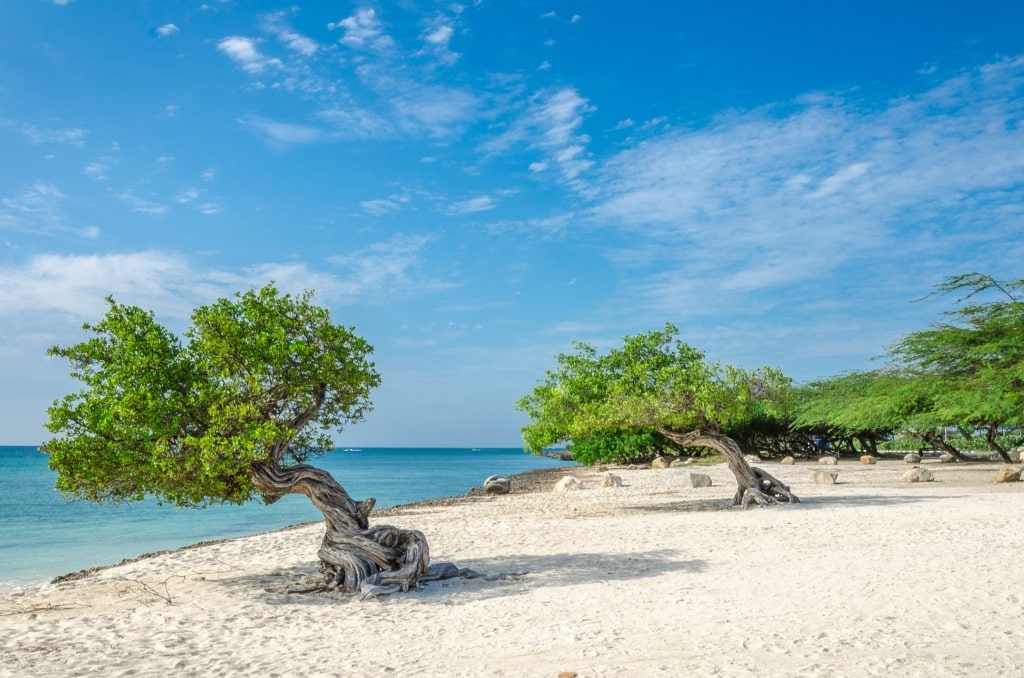
Eagle Beach
While Eagle Beach’s silky soft sands make this a tempting spot to top up your tan, there’s another reason to make a beeline for this beach: the divi-divi trees.
The most famous fofoti trees that Aruba is known for stand (or rather lean) proudly at the far end of the beach. Blown and beaten by Aruba’s equally infamous trade winds, the tree’s southwesterly tilt has become an island icon.
Not just a pretty photo spot, these beloved trees also provide welcome shade to beachgoers.
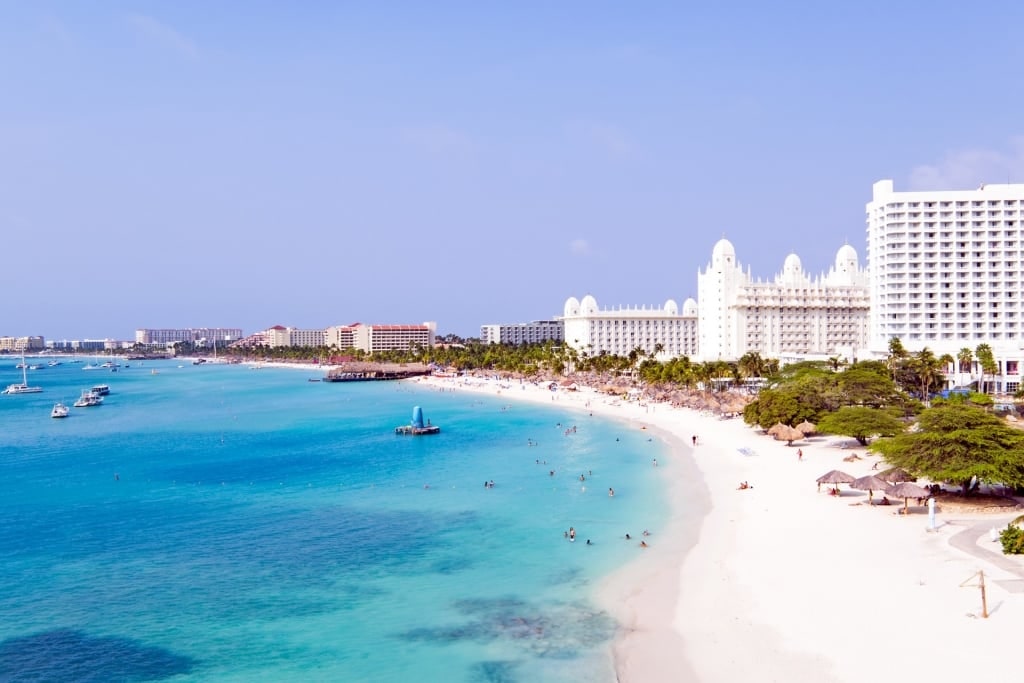
Palm Beach
Eagle Beach is less developed than Palm Beach, so you can enjoy a slightly more relaxed feeling here, which is perfect for those on a honeymoon in Aruba.
Still, you’ll find everything you’ll need for the perfect beach day. With cafés, restaurants, and beach kiosk bars serving up the local Bon Bini cocktail, visiting here is one of the best things to do in Aruba for couples.
San Nicolas
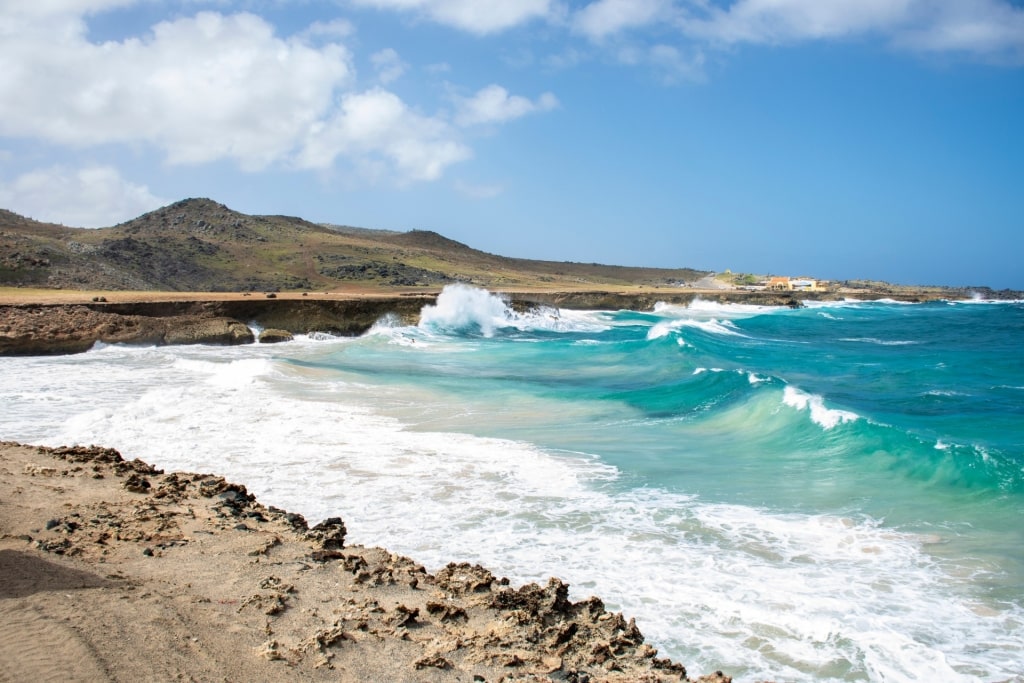
San Nicolas
Aruba’s second-largest city, San Nicolas, has been enjoying a renaissance in recent years, Spearheaded by passionate local artists, the city has reinvented itself as a creative hub and one of the best places in Aruba to celebrate carnival culture and street art.
Annual events such as the Aruba Art Fair and Aruba Carnival have helped bring even more life to the city’s streets.
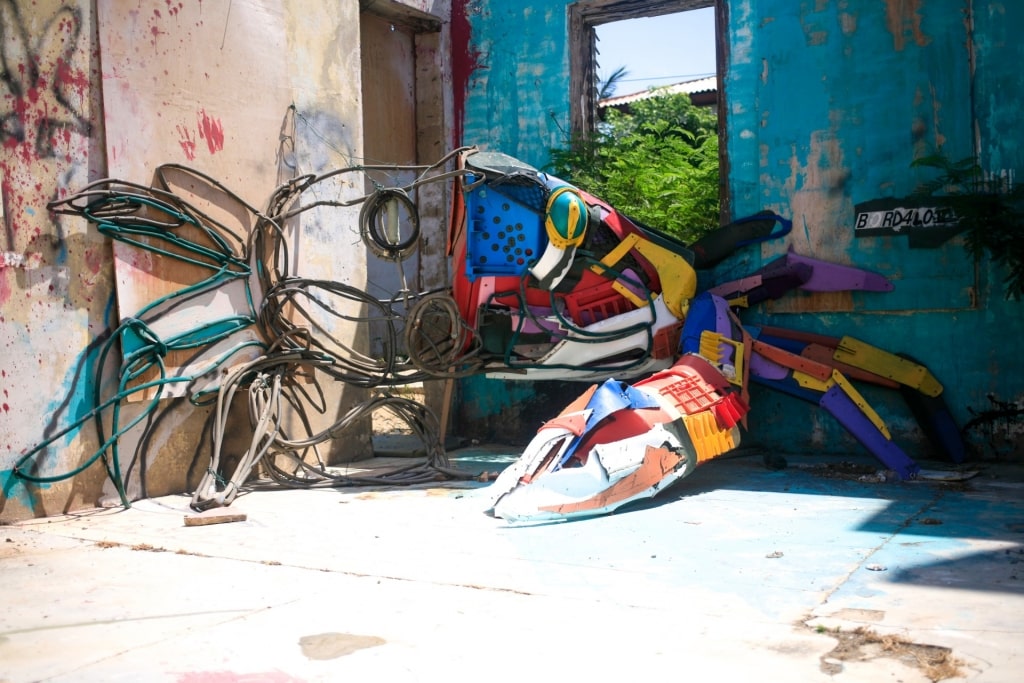
San Nicolas
The most evident of these new endeavors are the award-winning street art, mosaics, and murals now coating the facades of crumbling buildings, independent boutiques, and hyper-local cafés.
As you stroll the central cluster of streets, you’ll be introduced to local and international artists who have created works in all media, including Portugal’s Bordalo II upcycled-plastic lizard installation.
A visit to Aruba’s Carnival Museum will also allow a better understanding of the history, costumes, and culture of one of the Caribbean’s most significant celebrations, no matter what time of year you visit.
De Palm Island
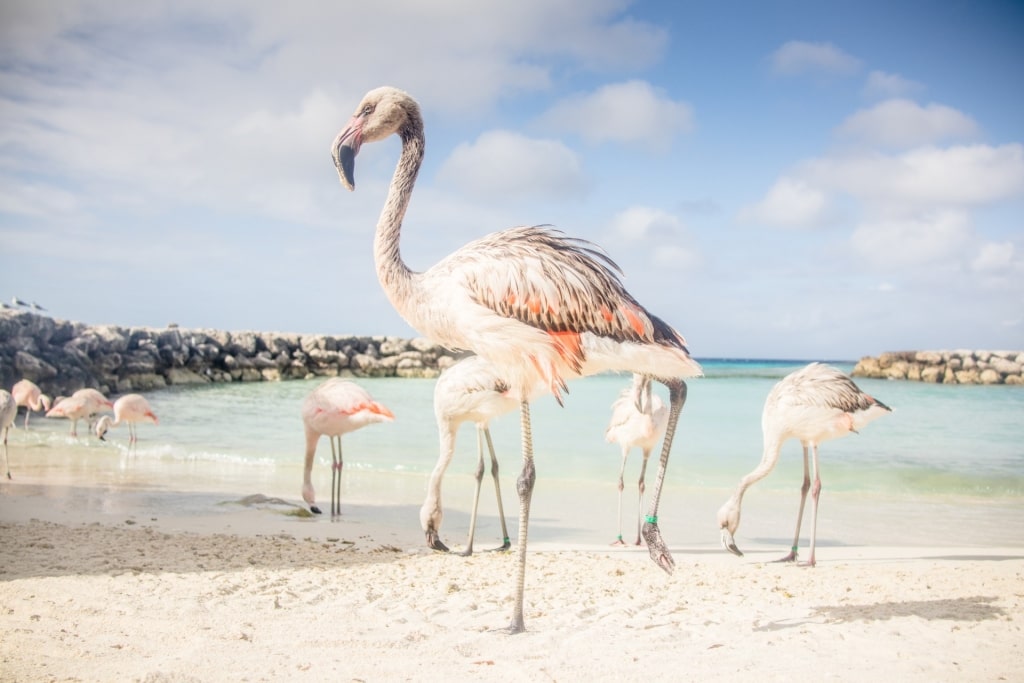
De Palm Island
Pristine and private, De Palm Island feels like a true bolthole, yet it’s just a five-minute boat journey away from the mainland. Part beach club and water park, part vegetation-coated luxury retreat, the offshore sandbar island snakes through the cerulean Caribbean Sea.
Flanked by coral reefs and decked out with relaxed experiences, the resort-like island is an idyllic escape to spend the day.
Whether you’re keen to do nothing more than lounge by the pool, Caribbean cocktail in hand, or would prefer to walk on the seabed kitted out in a diving helmet, De Palm’s host of activities will keep you entertained while on this island paradise.
California Lighthouse
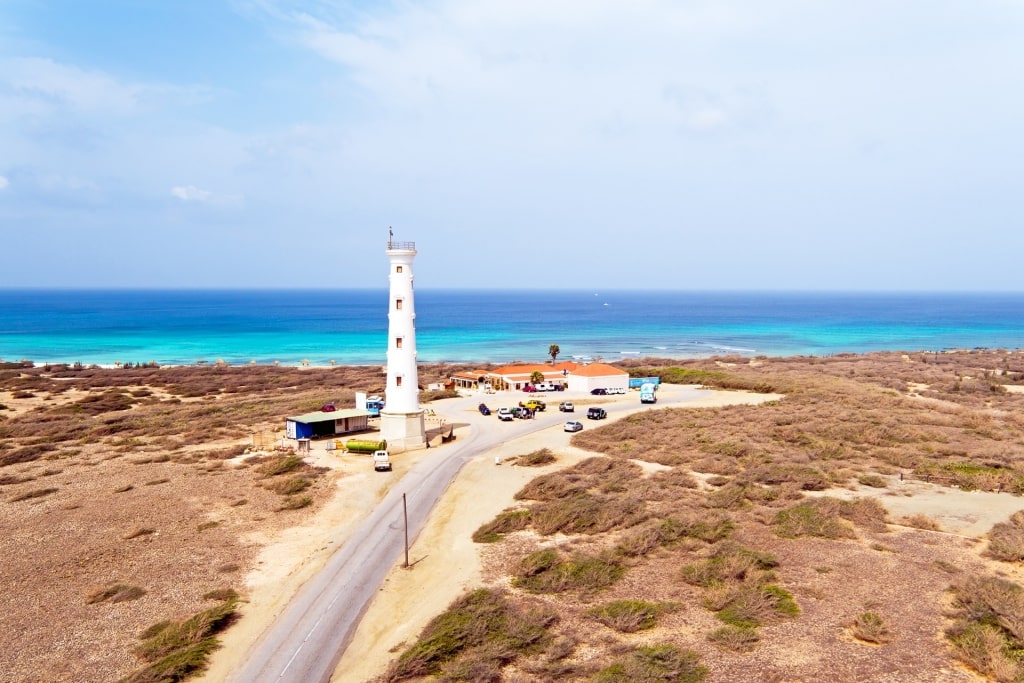
California Lighthouse
Towering above the Arashi Dunes in Aruba’s northwest, the California Lighthouse has established itself as one of the country’s prominent landmarks since its inauguration in 1916.
Named after a fruit-bearing ship that sank off the nearby coast some 25 years prior to its construction, the nearly 100-foot lighthouse soars towards the heavens. The lack of mountains on Aruba makes this man-made structure even more pronounced.
If you’re feeling nimble, climb the narrow staircase inside the famous lighthouse. Once you’ve squeezed your way to the top, you’ll be rewarded with 360-degree views across the island. You’ll return to the ground with fantastic photos of the cyan-water-lapped beaches below.
Aruba Aloe
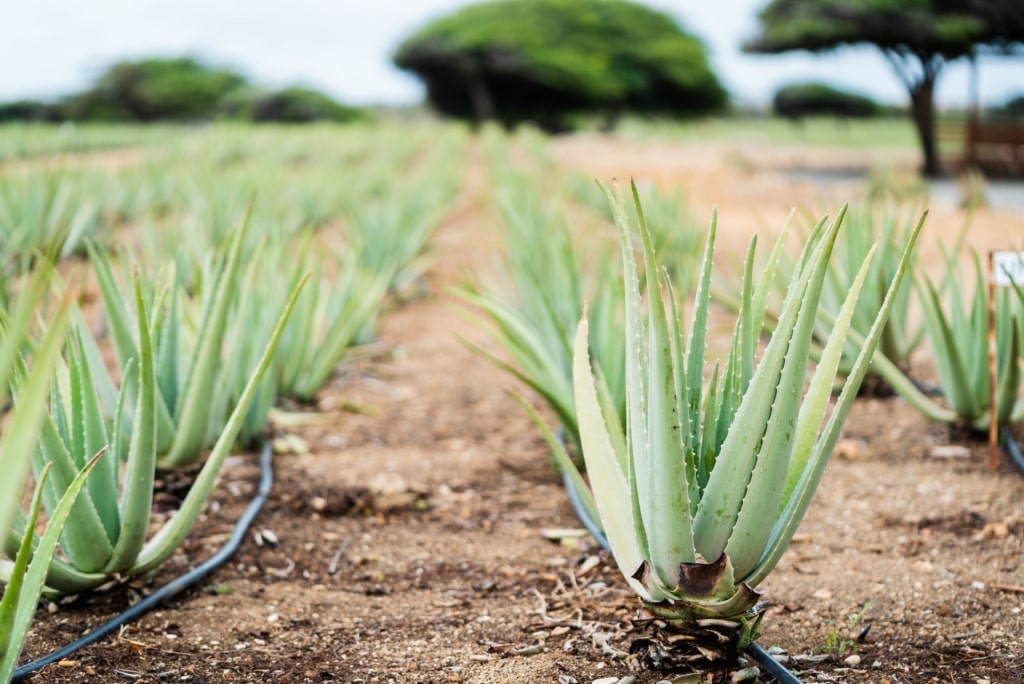
Aruba Aloe
For close to 200 years, aloe has been growing in Aruba. Aided by the arid interior landscape, the plants found on the island are regarded as some of the finest in the world, their high-quality gels being especially celebrated for their healing properties.
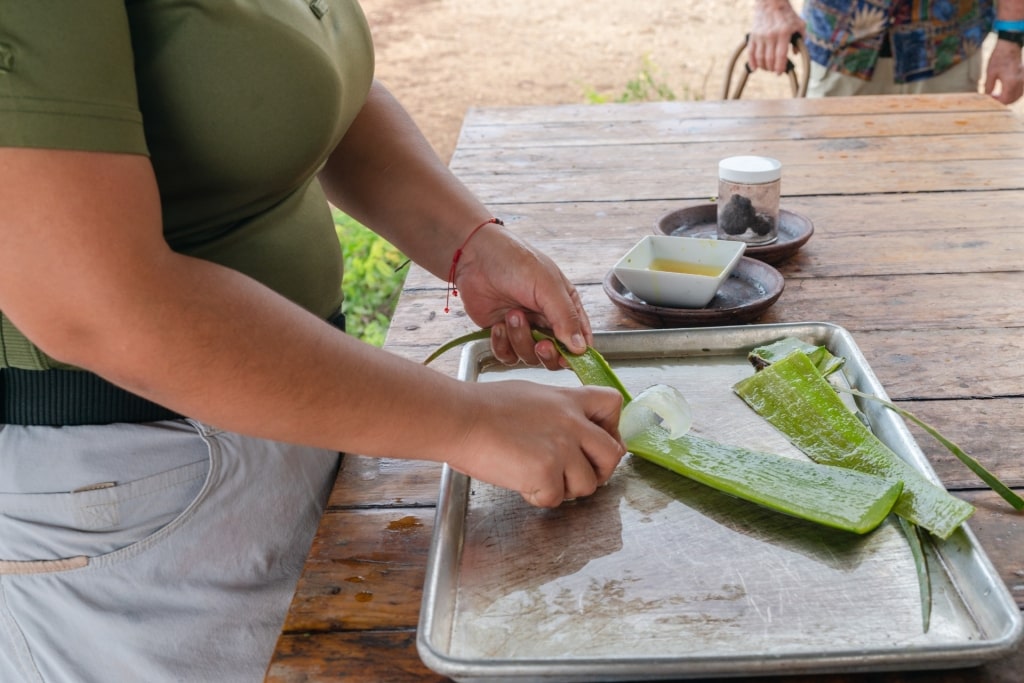
Aruba Aloe
While it’s one of the more unusual places to visit in Aruba, a tour of Aruba Aloe’s farming fields and factory will leave you with a new air of respect for this humble plant.
After the guided visit, you’ll have a chance to purchase premium skincare products directly from their source—a great souvenir to bring home.
Casibari & Ayo Rock Formations
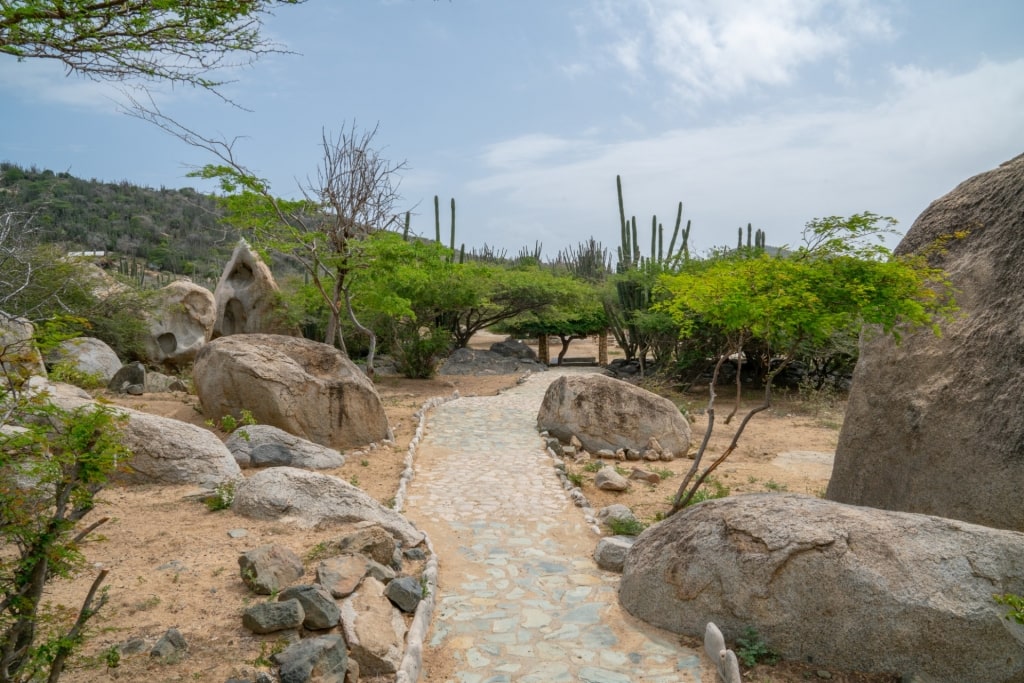
Casibari Rock Formations
Mere miles apart, these two imposing rock formations are some of Aruba’s most curious landmarks. Protruding into the skyline from the otherwise near-flat topography, both pop on the terrain, although Casibari’s peculiar setting in a residential area makes it so intriguing.
As you walk atop the giant boulders—courtesy of the purpose-built stairs—you can’t help but feel a strangely spiritual connection with the landscape.
Likewise, at the Ayo Rock Formations, the more remote settings add an air of mystery. It’s easy to see why these settings have been long-considered sacred sites by the Caquetío people, the pre-Colonial population of the island.
Mangel Halto
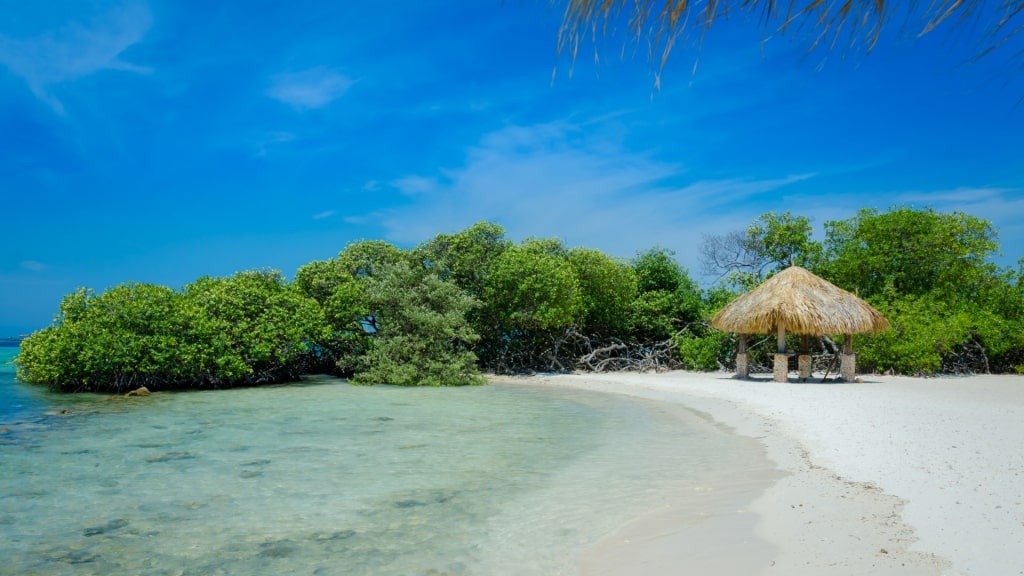
Mangel Halto
There are plenty of candidates for the best beach in Aruba, and Mangel Halto’s soothing sands and mangrove-backed bay make it worthy of the top spot.
Just a short drive south of Oranjestad, this tucked-away escape is particularly alluring for paddling, kayaking, and snorkeling in Aruba, thanks to the shallow waters. Farther out, in the deep blue, you’ll find some of the island’s best shore scuba diving.
Alto Vista Chapel and Winery
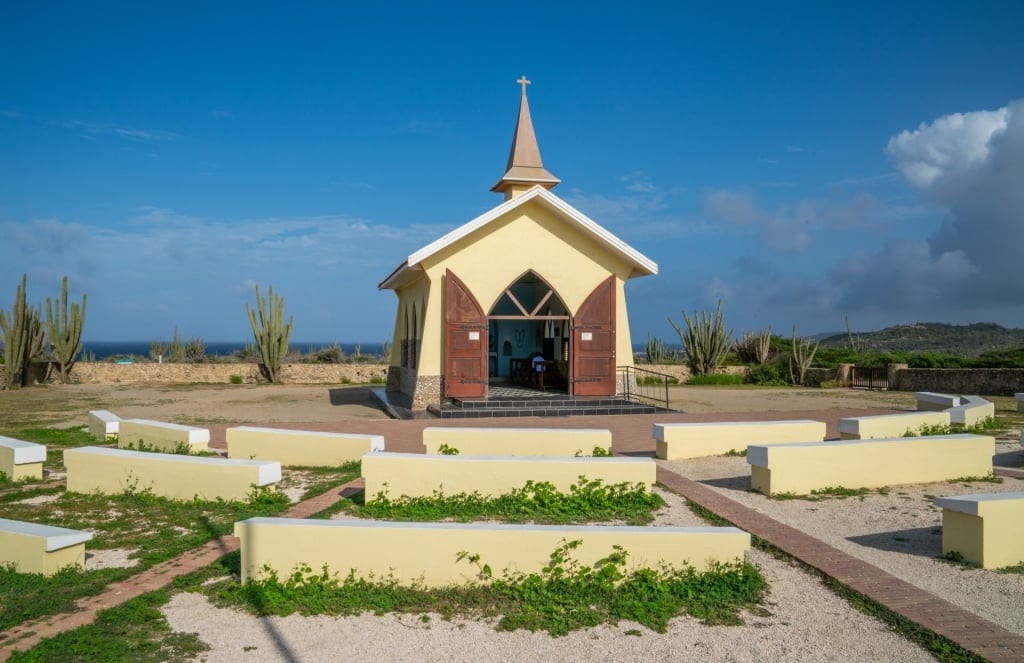
Alto Vista Chapel
Standing in solitude, the retro-looking and compact Alto Vista Chapel surveys its surroundings from a prime elevated position—the impressive views are often more of a tourism magnet than religion these days.
Still, since 1750 there has been a house of worship standing at this point, with the current chapel constructed in the 1950s. The door is nearly always open, while the exterior vistas and low-defined Peace Labyrinth at the chapel’s rear can be enjoyed anytime.
Nearby, you’ll also find the recently opened Alto Vista Winery and Rum Distillery, allowing you to soak up the splendid vine views accompanied by a glass of the island’s homegrown boutique wine.
With winemaking being such a new endeavor on the island, this is one of the best places in Aruba to see how the country is evolving and bring home a wine that is near impossible to find elsewhere.
SS Antilla Shipwreck
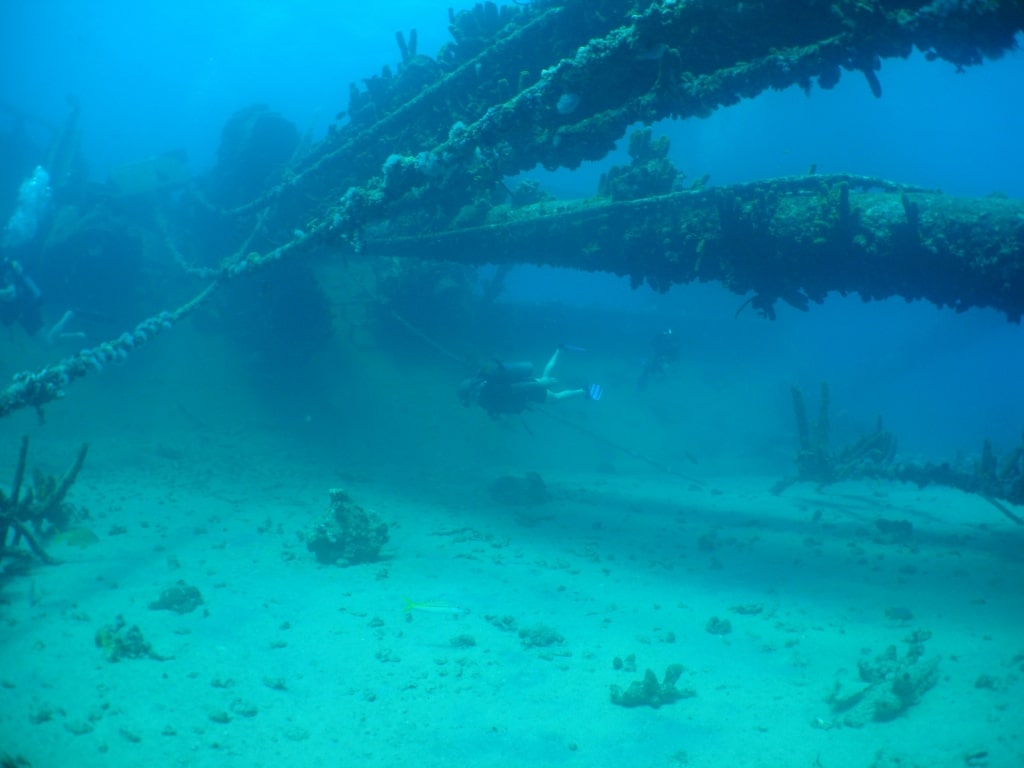
SS Antilla Shipwreck
Not all of the best places to visit in Aruba are on land, as the SS Antilla, a German cargo ship that was sunk in 1940, will testify.
While the vessel only sailed for around one year—the ship was scuttled by its crew following Germany’s attempted invasion of the Kingdom of the Netherlands—it’s been very much returned to life below water, having developed its own ecosystem in the 80 years since.
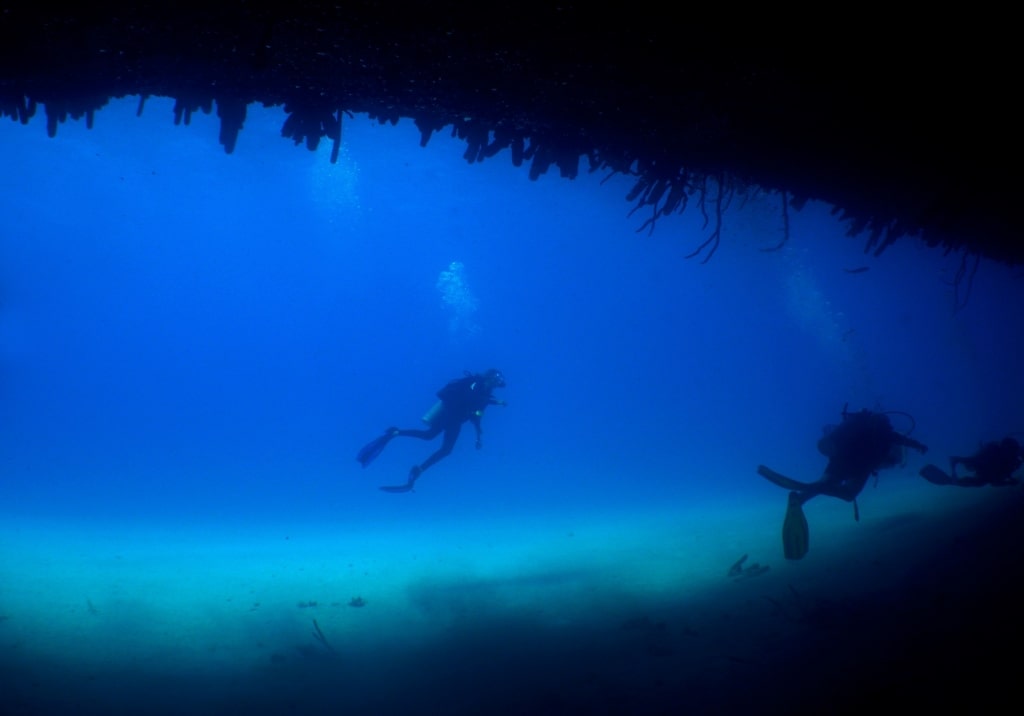
SS Antilla Shipwreck
Nowadays, the vessel is considered one of the best scuba diving sites in Aruba, as well as being the largest wreck dive in the Caribbean.
The ship sits around 65 feet below sea level, and Aruba’s translucent water ensures that open-water divers and even snorkelers can study the ship from above, marveling at the schools of fish, shrimps, and colorful corals which now inhabit the vessel.
Of course, the main reason to dive into the SS Antilla is the chance to explore the nearly 400-foot ship itself.
As you come face-to-face with its hull, gaze at the remains of railings, and discover the other still distinguishable features, you’ll certainly be left in awe by this defacto underwater museum.
The Donkey Sanctuary
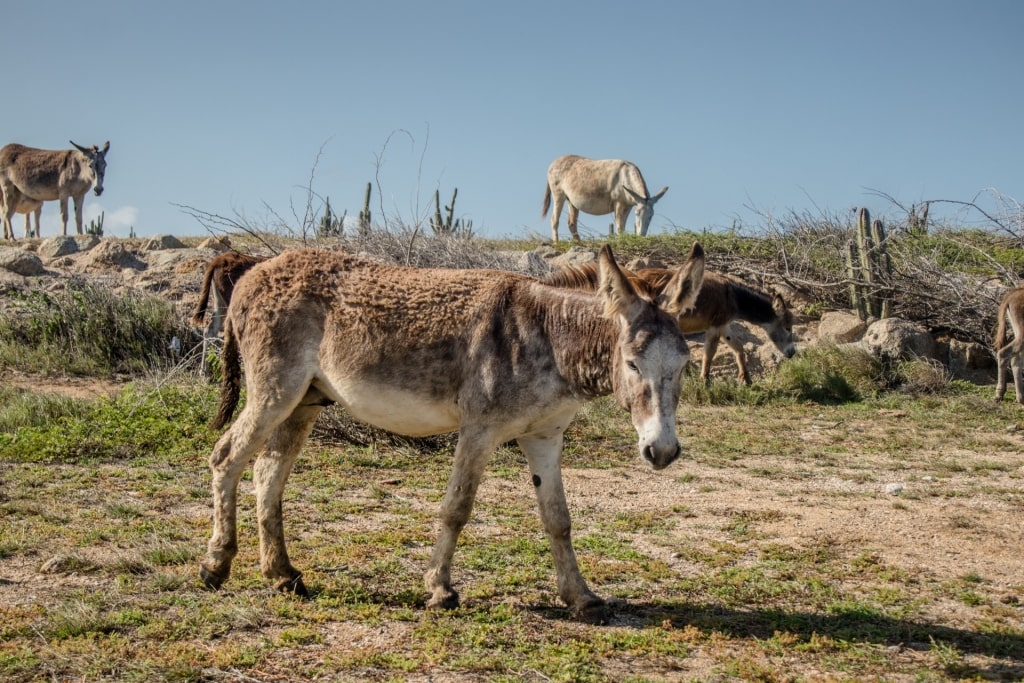
The Donkey Sanctuary
In long-forgotten days, Aruba’s donkey population numbered four digits. Sturdy and loyal, these working animals were integral to island life, providing transport and agricultural services while a smaller wild population ran free in Arikok National Park.
When cars became Arubans’ preferred method of transport, the animals were abandoned, and the donkey population started to dwindle. To provide a home for the roughly 150 abandoned animals and their offspring who remain on the island, the sanctuary was established in 1997.
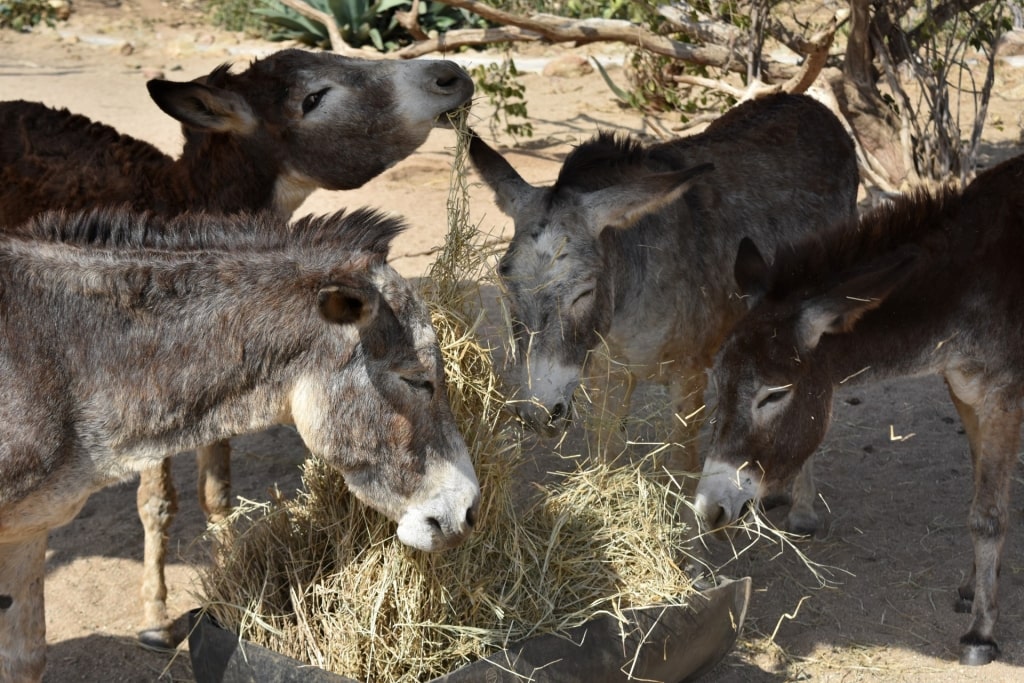
The Donkey Sanctuary
Free to access (a donation to support the project is always welcome), this is one of the best places in Aruba to spend some time if you’re traveling as a family. However, the kind nature of Aruba’s breed is sure to win over visitors of any age.
Read: Best Things to Do in Aruba with Kids
Bushiribana Ruins
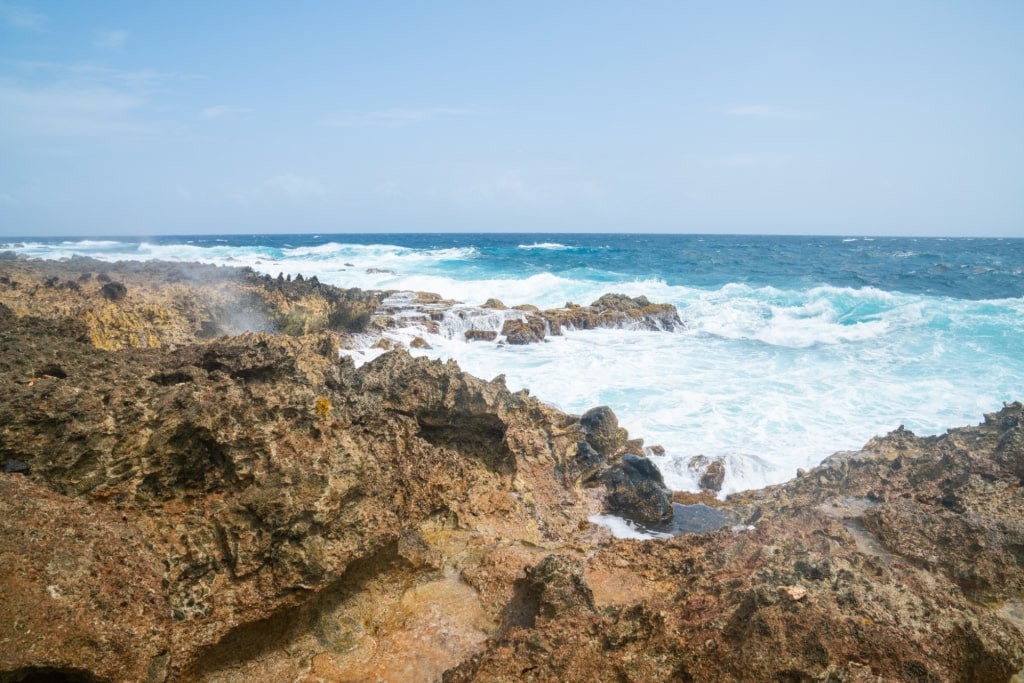
Bushiribana Ruins
Overlooking the wave-carved cliffs and weathered sands of the eastern coast, the historic mines of Bushiribana are one of two former gold processing sites on this Southern Caribbean island.
This precious material wasn’t (officially) discovered on the islands until 1824, and operations continued for close to a century, ending due to limited supplies during World War I.
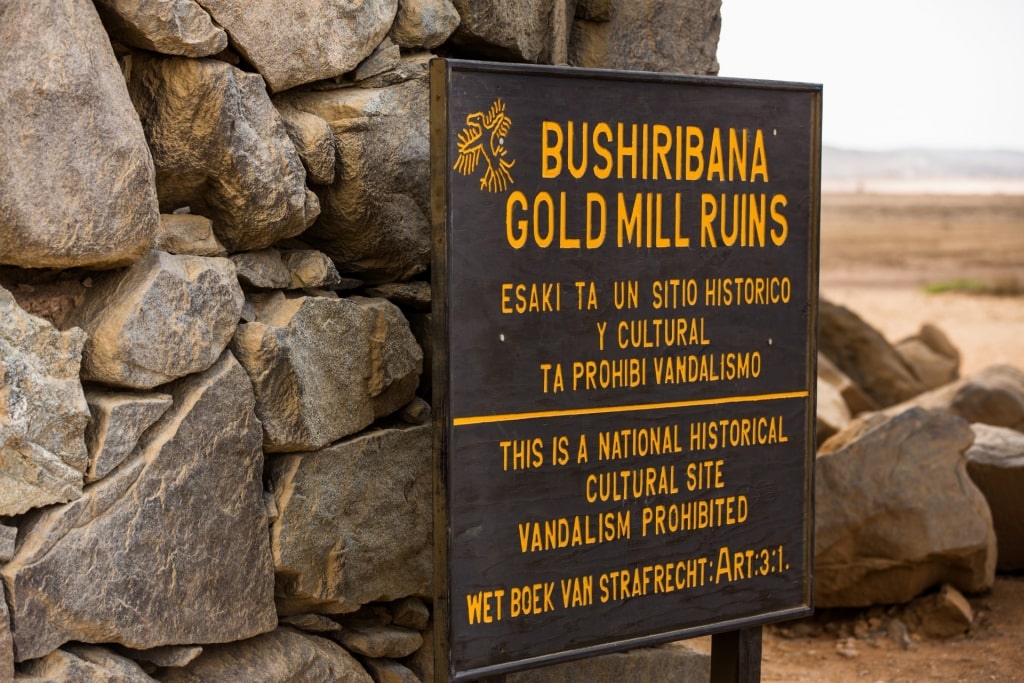
Bushiribana Ruins
Fast forward a little more than 100 years, and it’s hard to believe that what remains of the dilapidated Bushiribana Mine was in part responsible for the more than three million pounds of gold which were produced on the island.
The ruins of a second processing site, Balashi, can be found a shorter distance from Oranjestad.
While there isn’t much of the building left to explore, the sea views more than compensate. Close by, a couple of pleasant and wild trails can be walked, while equestrians will want to visit the nearby Gold Mine Ranch, where horseback rides alongside the ruins and the beaches can be arranged.
Read: Aruba Travel Tips
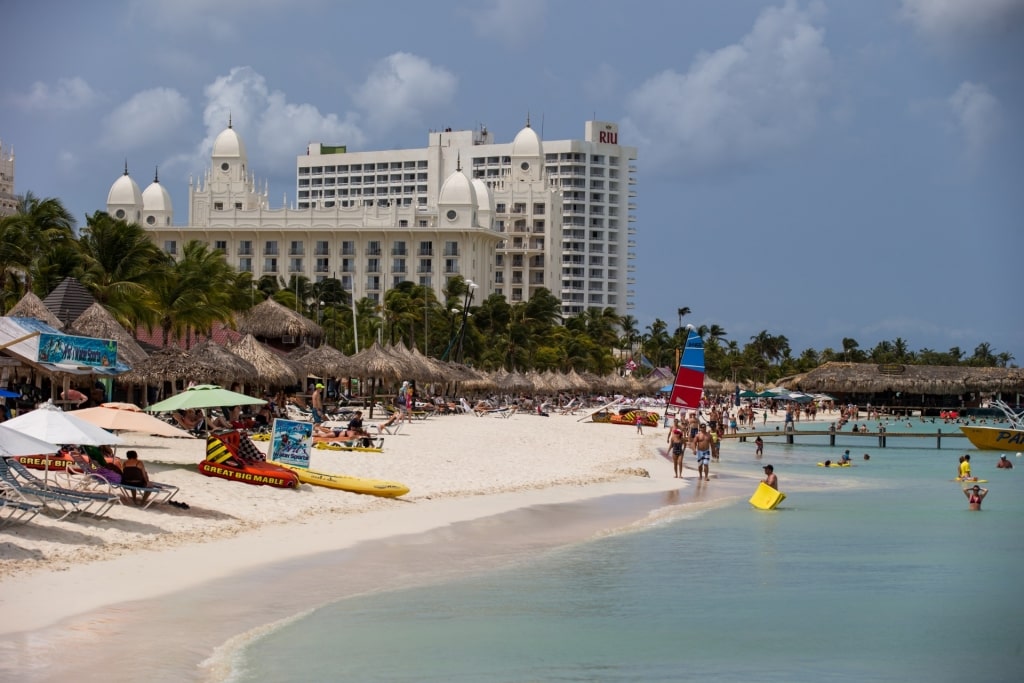
Palm Beach
Eager to experience Aruba’s captivating culture and coastline for yourself? Browse Celebrity’s Aruba cruises to plan your next Caribbean vacation.
